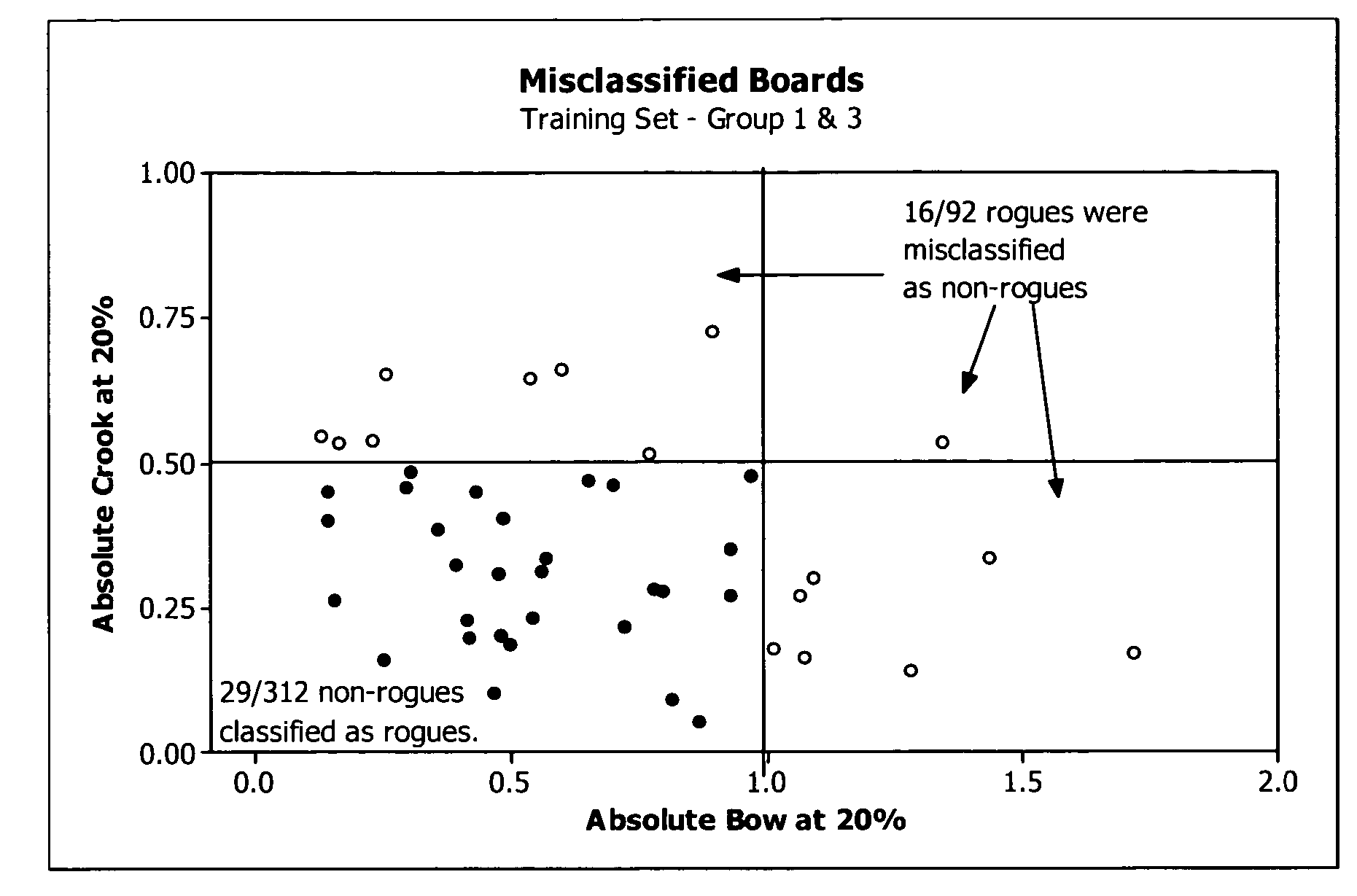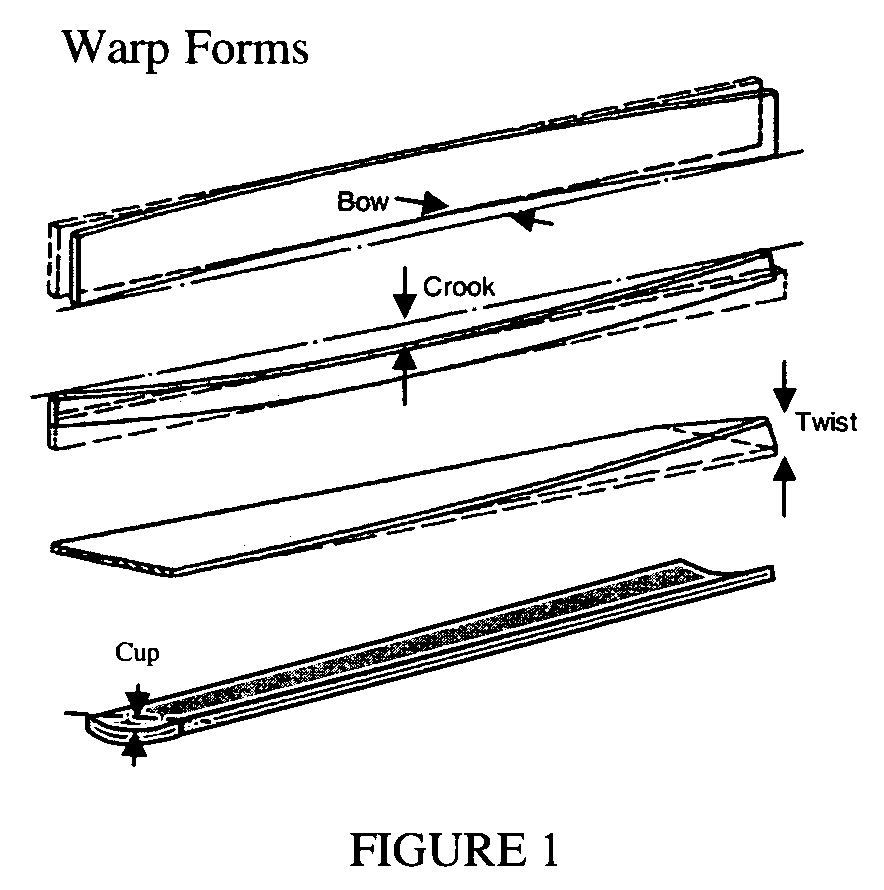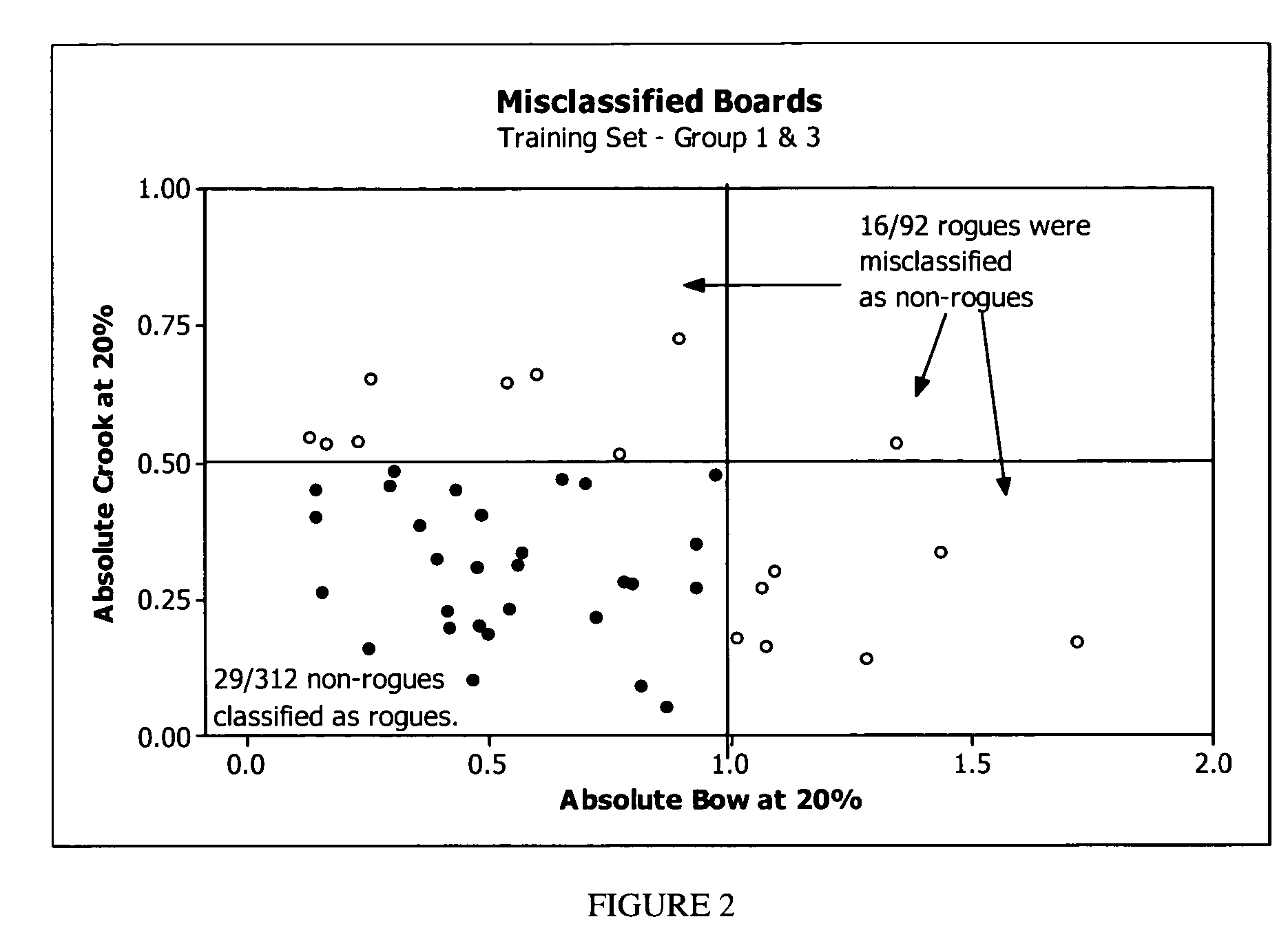Methods for determining dimensional stability of wood products utilizing single and multiple sensor groups
a sensor group and dimensional stability technology, applied in the field of determining dimensional stability of wood products utilizing single and multiple sensor groups, can solve the problems of intolerant wood product applications to significant dimensional changes, softwood lumber will continue to lose market share, interference problems,
- Summary
- Abstract
- Description
- Claims
- Application Information
AI Technical Summary
Benefits of technology
Problems solved by technology
Method used
Image
Examples
example 1
[0050]Three groups of lumber, each containing approximately 200 8-foot long 2 inch by 4 inch boards, were obtained from a mill. Via the use of multiple sensors, each piece of lumber was measured for crook, bow, average moisture content, ultrasonic velocity and a density profile was obtained. Each piece of wood was then placed in a 20% relative humidity, or “RH” environment for 5 weeks and then measured again for crook and bow. In this example, the objective was to classify the boards into two final warp classes (at 20% RH) using the initial data from multiple sensors. The final warp classes were defined as follows: a board was classified as a “rogue” if the absolute crook at 20% RH was greater than 0.5 inches or the absolute bow at 20% RH was greater than 1.0 inches. Otherwise the board was classified as a “non-rogue”.
[0051]The initial data from lumber groups 1 and 3 were used to develop and train the classification algorithm and the initial data from boards in group 2 were used to ...
example 2
[0073]The sensor data used were “Tracheid-effect” line images and absorbance spectra obtained from near infrared (NIR) spectroscopy. (Additional information describing these two sensor technologies can be found in (Nystrom and Hagman)16 and (Williams and Norris)17 respectively). A training data set consisting of approximately 350 12″×1″×¾″ pieces of wood was used to build a shrinkage-coefficient calibration model. Each piece of wood was scanned for both Tracheid-effect images and NIR spectra. Several parameters were calculated from each Tracheid-effect image. In addition, each piece of wood was equilibrated at two different times in two different relative humidity environments—20% RH and 90% RH. Length measurements were made at each humidity condition and the moisture-induced dimensional change was recorded. 16Nystrom, J.; Hagman, O.; Methods for detecting compression wood in green and dry conditions., Proceedings of the SPIE—The International Society for Optical Engineering (1999) ...
example 3
[0079]Eighteen 2×4 cross sections were equilibrated to 20% RH and ripped into four equal coupons. The instantaneous strain of each coupon was determined from the difference in length before and after ripping. A longitudinal shrinkage rate coefficient (LSRC) was also determined for each coupon. Two pairs of coupons on either side of centerline were reviewed. Data from these pairs was analyzed to determine whether predicted LSRC differences (based on methods described earlier) could be used to identify pairs having high instantaneous strain difference (i.e. sections likely to distort during a ripping operation.)
[0080]Results are shown in FIG. 21. The test demonstrated that LSRC estimates can indeed be used to identify pieces of lumber that likely contain significant internal stresses and are, therefore, not candidates for a ripping operation.
[0081]The method can be applied to a board that has residual moisture gradients resulting from kiln-drying and that will subsequently change shap...
PUM
 Login to View More
Login to View More Abstract
Description
Claims
Application Information
 Login to View More
Login to View More - R&D
- Intellectual Property
- Life Sciences
- Materials
- Tech Scout
- Unparalleled Data Quality
- Higher Quality Content
- 60% Fewer Hallucinations
Browse by: Latest US Patents, China's latest patents, Technical Efficacy Thesaurus, Application Domain, Technology Topic, Popular Technical Reports.
© 2025 PatSnap. All rights reserved.Legal|Privacy policy|Modern Slavery Act Transparency Statement|Sitemap|About US| Contact US: help@patsnap.com



